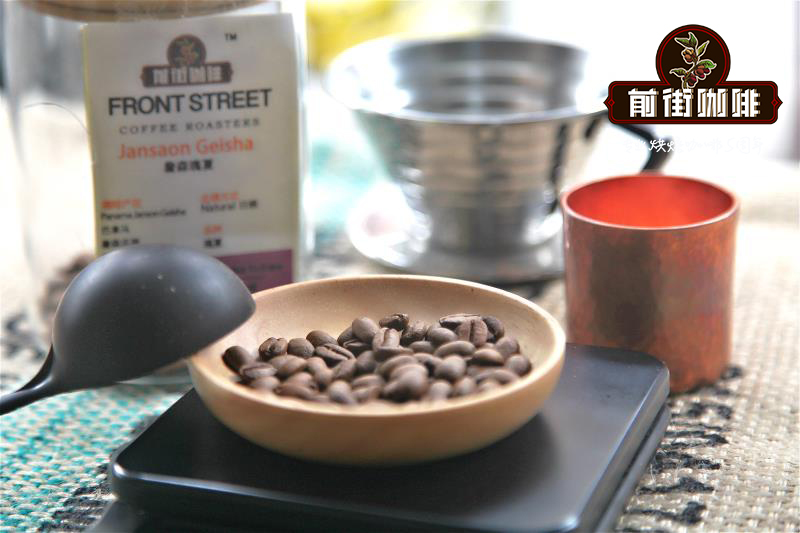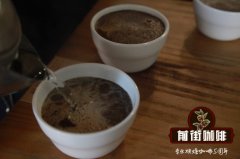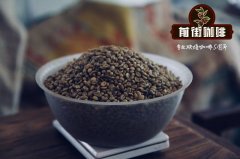What's the flavor of Blue Mountain Coffee? how does Blue Mountain Coffee taste good in a siphon pot?

Professional coffee knowledge exchange more coffee bean information please follow the coffee workshop (Wechat official account cafe_style)
Have you ever had Blue Mountain Coffee?
As you may know, Blue Mountain is located in the east of Jamaica. The highest mountain in the Western Caribbean, despite its unique climate and soil conditions, is not really Blue Mountain coffee. Only coffee beans growing above 1700 meters above sea level will be certified as "Jamaican Blue Mountain Coffee" by the Jamaican government, while those below this line can only be called "Jamaican Alpine Coffee" at most.
Jamaica Blue Mountains
Although the top blue mountain coffee beans produce about 2,000 tons a year, these "golden" beans are still quite rare on the market. Because in 1969, Jamaica was hit hard by a hurricane. At that time, Japan's UCC Uashima Coffee introduced eco-technology into coffee cultivation to help revive the Jamaican coffee industry. As a token of gratitude, the Jamaican government signed a contract with Japan in 1971, agreeing to ship 90% of its annual output to Japan. Most of the remaining 10% go into the pockets of the rich or royalty before entering the market.
Coffee schematic diagram
Just because the amount of Blue Mountain coffee in circulation is so rare, the Blue Mountain coffee that we can usually buy in convenience stores or coffee shops can only be regarded as Blue Mountain "flavor" coffee. Usually, in order to imitate the slightly bitter and sour taste of Blue Mountain Coffee, the industry will use different varieties of coffee beans to mix. Conscientious shopkeepers use Jamaican alpine coffee mixed with , Hawaiian Kona coffee or Colombian coffee, while more black-hearted ones mix Brazilian, Guadeloupe or other cheap coffee. But even so, sales of these coffees from other countries have been boosted by "imitating" Blue Mountain Coffee. As for pure Blue Mountain coffee, although only a few shops in China sell it, if you want to taste a cup, I am afraid it will cost a lot of money.
In fact, "Blue Mountain Coffee does not contain Blue Mountain Coffee beans" is something that many coffee fans know, just like "there is no truffle in truffle chocolate" and "there is no sun in sun cake". And "there is no money in your wallet" may be the main reason why you have never tasted Blue Mountain Coffee.
The Blue Mountain of Jamaica is the highest mountain in the Western Caribbean (2256 meters high). The highest annual output of top Blue Mountain coffee is 2400 tons, of which WALLENFORD, the state-owned estate, is the most important and famous coffee farm, while WALLENFORD, MAVIS BANK, SILVER HILL, MOY HALL and GOLD CUP are relatively well-known brands.
The production of coffee is the same as that of general agricultural products, and there are great changes due to the influence of the weather. In 1969, the production of Blue Mountain Coffee in Jamaica was troubled by the hurricane. UCC enterprises in Japan provided assistance to introduce ecological planting methods.
In gratitude for the assistance of Japanese companies, Jamaica signed a contract with Japan in 1972 to supply 90% of its annual output to the Japanese market. The remaining 10% of about 3500 barrels (70 kg in oak barrels) are then released to the market (and the only coffee that preserves oak barrel packaging), so Blue Mountain Coffee is very popular in the market, establishing Blue Mountain Coffee as the dominant coffee market.
In addition to less production, the cooking skills that show the flavor of Blue Mountain Coffee-slightly sour and less bitter-are also more difficult to master, so some chefs use this as a skill to show the moderation of Blue Mountain Coffee.
Blue Mountain Coffee has a special vanilla flavor and fragrant and mellow characteristics, a very good sense of sour and bitter balance and smooth, the colder the more mellow, for one of the most delicate and delicate coffee.
Introduce how to cook Blue Mountain Coffee in a siphon coffee pot.
1. First, dig two tablespoons of coffee powder and pour it into the upper seat of the coffee pot.
two。 Prepare 150 CC of mineral water (my experience is that coffee made from mineral water is very sweet)
3. Boil the water over medium heat until it boils up (be careful not to boil it over high heat, because too much boiling will scald the coffee and boil out the bitterness)
4. After the water runs up, turn the fire to a low heat, and then cook over low heat for 30 seconds (I have calculated that it is the best time to bring out the taste of Blue Mountain Coffee. Too much or too little will affect the taste of the coffee.)
5. Stir gently with a spoon when the water stays in the upper seat for 30 seconds.
6. Stir for 30 seconds and then let the coffee drop.
PS suggested drinking method: the best taste temperature of Blue Mountain Coffee is about 60 degrees Celsius. Just pour out the coffee and smell the aroma first. When you smell the aroma, the coffee will drop to 60 degrees in about 30 seconds. At this time, you can taste the taste. In addition, the cold Blue Mountain also has a different flavor. You can try it.
Important Notice :
前街咖啡 FrontStreet Coffee has moved to new addredd:
FrontStreet Coffee Address: 315,Donghua East Road,GuangZhou
Tel:020 38364473
- Prev

How do you drink Nicaraguan sunburn Vera Saatchi coffee? Introduction of planting varieties in Buenos Aires Manor
Professional coffee knowledge exchange more coffee bean information please pay attention to the coffee workshop (Wechat official account cafe_style) the growing conditions in Nicaragua are not inferior to those in Central American countries, grown in shaded coffee at high elevations, round and balanced with less sharp acidity, the main unknown factors are war and hurricanes, resulting in the unsustainable operation of a single farm and no historical data.
- Next

What is the use of the Colombian microbatch program? Introduction of Coffee producing areas in Colombia
For more information on coffee beans, please follow the Coffee Workshop (Wechat official account cafe_style) Columbia Micro-batch small Farmer Program, which offers coffee farmers from several of Colombia's best producing areas including Huila, Narino, Cauca, Tolima, etc., unlike many coffee farmers who grow Castillo varieties, small farmers plan to widely choose to grow Bourbon, Typ.
Related
- Detailed explanation of Jadeite planting Land in Panamanian Jadeite Manor introduction to the grading system of Jadeite competitive bidding, Red bid, Green bid and Rose Summer
- Story of Coffee planting in Brenka region of Costa Rica Stonehenge Manor anaerobic heavy honey treatment of flavor mouth
- What's on the barrel of Blue Mountain Coffee beans?
- Can American coffee also pull flowers? How to use hot American style to pull out a good-looking pattern?
- Can you make a cold extract with coffee beans? What is the right proportion for cold-extracted coffee formula?
- Indonesian PWN Gold Mandrine Coffee Origin Features Flavor How to Chong? Mandolin coffee is American.
- A brief introduction to the flavor characteristics of Brazilian yellow bourbon coffee beans
- What is the effect of different water quality on the flavor of cold-extracted coffee? What kind of water is best for brewing coffee?
- Why do you think of Rose Summer whenever you mention Panamanian coffee?
- Introduction to the characteristics of authentic blue mountain coffee bean producing areas? What is the CIB Coffee Authority in Jamaica?

